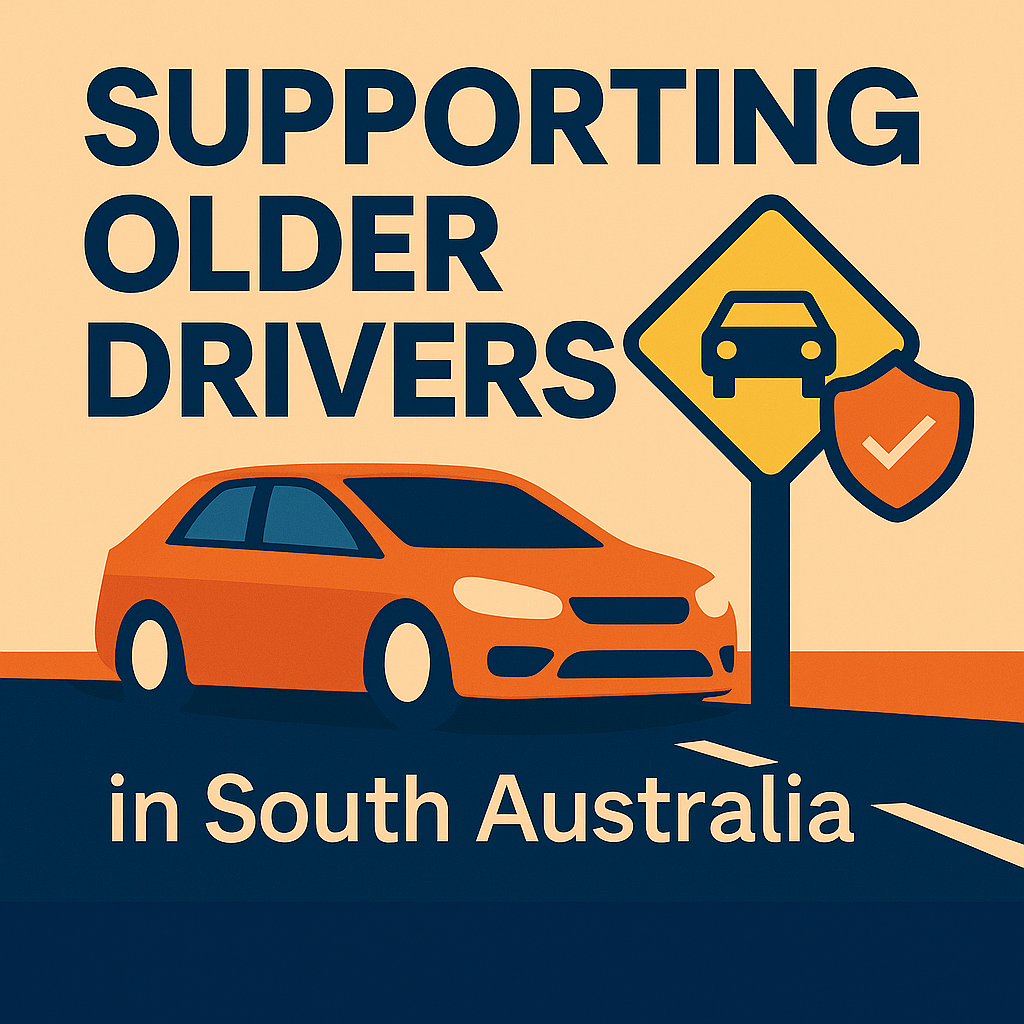Recent news reports have highlighted a rise in car accidents involving older drivers across South Australia. These incidents are often shared widely—sometimes with frustration or blame—but that doesn’t help anyone. This article offers a respectful, fact-based view and encourages open discussion.
It is written for older drivers, families, community leaders, and road safety professionals.
Ageing and Driving: What We Know
As we age, changes in eyesight, mobility, and reaction time naturally occur. While many older drivers are safe and cautious, some situations—like merging lanes, busy intersections, or glare from sunlight—can become more difficult.
“The crash risk per kilometre increases for drivers aged 70 years and older, especially in complex traffic situations.”
— Department for Infrastructure and Transport, 2022
Read the full DIT report (PDF)
Everyone Drives the Same Road
Road conditions are not to blame. Every driver—young or old—drives on the same roads, faces the same signs, and responds to the same traffic environment. The real challenge is recognising when a driver may need support, updated knowledge, or simply more time to adapt.
Why Self-Awareness Is Hard
It’s often difficult for older drivers to notice their own gradual decline in skills. Families may hesitate to speak up. Meanwhile, government information about road rule changes or licence requirements may not always reach or be understood by seniors—especially those from migrant backgrounds or with limited English.
That’s why tools like self-assessments and support programs are so important.
What Can Help?
1. Self-Assessment Tools
The SA Government offers a helpful self-check guide:
Fitness to Drive Self-Assessment – SA.GOV.AU
Includes:
- Questions about vision, medications, and memory
- Warning signs to look for
- Guidance on what to do next
2. Safer Cars with Better Technology
Modern vehicles include features that support safe driving—especially useful for older drivers:
- Autonomous Emergency Braking (AEB)
- Blind Spot Monitoring
- Lane-Keeping Assist
- Cross-Traffic Alerts
- Reversing Cameras
“Safety assist technologies… can greatly benefit older drivers.”
— ANCAP, 2023
Top-rated cars for older drivers
3. Staying Updated on Road Rules
New laws, signs, and road markings are introduced every year. Many older drivers haven’t had formal training since the 1970s or 1980s. A quick refresher can make a big difference.
Free resources and plain-English articles are available at:
- South Australian Road Rule Updates — What Seniors Need to Know (2024–2025)
- Road Rules Amendment from Mylicence SA
- MovingRightAlong from DIT
4. Family Support
Family members can:
- Ride along to observe
- Encourage regular health checks
- Gently start conversations about difficult situations
- Recommend safety courses or licence reviews
5. Community-Based Education
Organisations like Adelaide Senior Driver and Health Association are developing bilingual support for older migrants and their families. These include:
- Senior Driver Refresher Workshops
- Family info nights
- Resources in English, Chinese, and more
Final Thought
Age is not the issue—awareness is.
No one wants to give up driving, especially when it connects them to independence. But by recognising changes, choosing safer vehicles, and encouraging respectful conversations, we can help South Australians stay safe on the road at every age.
References
- Department for Infrastructure and Transport. (2022). Older Road Users: Road Safety Strategy. DIT PDF
- SA.GOV.AU. (2024). Fitness to Drive – Self Assessment. SA.GOV.AU
- ANCAP. (2023). Top-Rated Cars for Older Drivers. ANCAP Link
